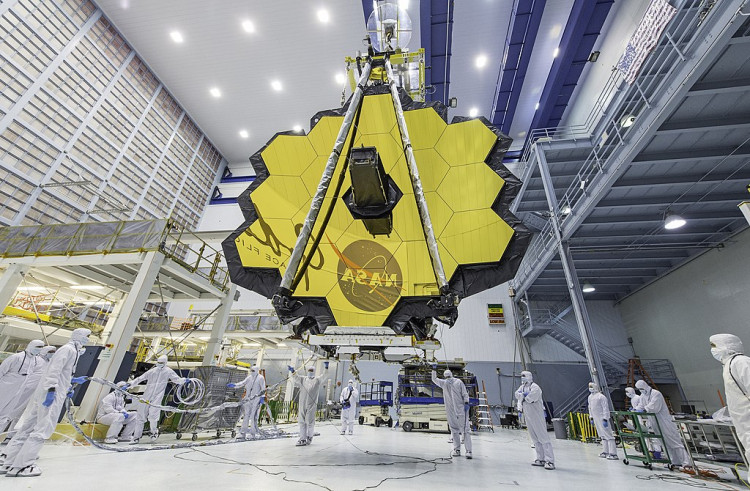The James Webb Space Telescope is nearing the end of its deployment process after nearly a month in space. The telescope has been transformed from its tightly folded launch form to what appears to be a true observatory after a laborious series of deployments, albeit science observations are still months away.
Webb's golden primary mirror is made up of 18 separate hexagonal segments, each of which is controlled by seven actuators for exact movement. All 18 segments have now been deployed several days ahead of schedule.
On Jan. 12, work on the mirror parts began, and it was estimated to take around 10 days to complete. These mirror segments, despite today's statement, aren't nearly ready to be observed yet. To begin, NASA must fine-tune each mirror's position in order to combine 18 different views of the universe into one big, super-powerful mirror.
The entire mirror process, according to Webb's team, will take around three months to complete.
"Just in from the @NASAWebb team: All 18 primary mirror segments and the secondary mirror are now fully deployed!" NASA Administrator Bill Nelson wrote in a tweet posted on Wednesday. "Congratulations to the teams that have been working tirelessly since launch to get to this point. Soon, Webb will arrive at its new home, L2!"
Webb has one more critical deployment milestone to complete: a trajectory burn that will place the observatory in orbit around the Earth-sun Lagrange point 2, or L2. L2 is roughly one million miles (1.5 million kilometers) from Earth, on the planet's opposite side.
Webb is slated to conduct this last arrival maneuver on Sunday, Jan. 23, according to a NASA timeline.
On Dec. 25, an Ariane 5 rocket launched from Europe's Spaceport in Kourou, French Guiana, bringing the long-awaited James Webb Space Telescope - as well as the hopes and dreams of countless astronomers, astrophysicists, and planetary scientists around the world - into the final frontier.
If all goes well, the massive telescope will gaze at the universe's earliest stars and galaxies, sniff the atmospheres of nearby alien planets, and conduct a number of other high-profile, high-impact tasks during the following five to ten years.
Webb has been in development for about three decades. In September 1989, a group of astronomers met at the Space Telescope Science Institute in Baltimore to explore a possible successor to the Hubble Space Telescope.
Because L2 is too far away for astronauts to visit, Webb will be on its own out there; Hubble-like servicing missions are not planned for the massive new telescope.






